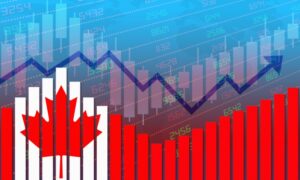
According to the results of the first half of 2025, Poland remains Ukraine’s main trading partner in terms of export volumes. According to research by Active Group and Experts Club, exports to Poland amounted to US$2.45 billion.
Turkey ranks second with USD 1.71 billion, and Italy ranks third with USD 1.17 billion. Other major partners include: Germany ($1.09 billion), Spain ($976 million), the Netherlands ($919 million), China ($847 million), Egypt ($776 million), Romania ($679 million), and Hungary ($652 million).

“The structure of Ukraine’s exports shows a clear focus on European Union countries. Poland, Italy, Germany, Spain, and the Netherlands together account for more than half of total exports. This indicates Ukraine’s strategic integration into the European economic space,” emphasized Maksim Urakin, founder of Experts Club and economist.
He also noted that Turkey remains a critically important partner for Ukrainian agricultural and metallurgical exports, while China and Egypt are key markets for agricultural products, particularly grains.
“The presence of trading partners such as Egypt and China diversifies Ukrainian exports,” Urakin added.
CHINA, ECONOMY, EGYPT, EXPERTS CLUB, EXPORTS, GERMANY, HUNGARY, ITALY, POLAND, ROMANIA, TRADE, TURKEY, UKRAINE, МАКСИМ УРАКИН

According to Serbian Economist, the Serbian Economists’ Association (SEA) will host the 11th World Congress of Economists, which will take place in Belgrade from June 22 to 26, 2026, the SEA announced.
More than 1,000 leading global economists from prestigious universities are expected to attend. A delegation from the International Economic Association (IEA) was in Belgrade during this time, with SES representatives, led by Chairman Aleksandar Vlahovic, agreeing on the organizational and program details of the forum.
“We had very productive meetings, discussed key issues, and proved that we are ready to organize such a prestigious event at the highest level,” Vlahovic said.
According to him, the importance of the congress is underscored by the fact that the program committee is headed by Harvard University professor and Nobel Prize winner in economics Eric Maskin. Other Nobel laureates and experts who have held key positions in the economic policy of the world’s leading countries are also expected to arrive in Belgrade.
The congress is being held in Southeast Europe for the first time and is returning to Europe after 20 years. The SES believes that this forum will be an opportunity for universities and research institutes in Serbia and the region to establish strong ties with the global academic community, and for businesses and authorities to receive direct recommendations from leading economists.
The World Congress is organized by the International Economic Association (IEA) every three years. The forum brings together hundreds of scientists and experts to discuss global economic trends and new scientific approaches. In 2023, the congress was held in Medellin, Colombia, and brought together representatives of the academic and business worlds from all continents.
The main role of the congress is to bring together academic science and practice, develop dialogue between economists and politicians, and shape innovative solutions for the global economy.
https://t.me/relocationrs/1463

GDP and economic growth
GDP
Inflation
Unemployment
Additional macro indicators

Ukraine will be able to avoid recession and even accelerate economic development after the end of active hostilities, the first deputy head of the NBU, Serhiy Mykolaychuk, has said.
In an interview with Interfax-Ukraine, he emphasized that the international experience of post-war crises is not fully applicable to Ukraine.
“We expect that defense spending will remain significant, while European integration plans and capital inflows will support the economy. In addition, the reintegration of veterans into peaceful life will be faster than it was in other countries, thanks to modern technologies and features of society,” Mykolaychuk said.

This article presents key macroeconomic indicators for Ukraine and the global economy as of the end of April 2025.
The analysis is based on current data from the State Statistics Service of Ukraine (SSSU), the National Bank of Ukraine (NBU), the International Monetary Fund (IMF), the World Bank, and leading national statistical agencies (Eurostat, BEA, NBS, ONS, TurkStat, IBGE).
Maksim Urakin, Director of Marketing and Development at Interfax-Ukraine, Candidate of Economic Sciences and founder of the Experts Club information and analytical center, presented an overview of current macroeconomic trends.
Macroeconomic indicators of Ukraine
The first four months of 2025 were marked by weak but still positive economic growth for Ukraine. According to the NBU’s estimates, real GDP grew by about +0.5% year-on-year, and the State Statistics Service’s preliminary calculations later revised the dynamics to about +0.9% year-on-year and approximately +0.7% quarter-on-quarter. In the context of full-scale war, constant threats to infrastructure and logistics, a shortage of long-term capital, and limited investment programs, this primarily means maintaining the functionality of the economic system.
“Half a percent or even a percent of growth is not about acceleration, but about endurance. We are seeing a revival of domestic demand in trade, logistics, and certain high-tech niches. But this is essentially a recovery “on the spot”: without a massive investment impulse, without an expansion of value-added exports, without accessible long-term resources, banks and businesses will not be able to scale up. We need to move from survival to development — through investment, industrial projects, and an export ecosystem,” emphasizes Maksim Urakin.
Inflationary pressure is slowly easing. Annual inflation in April was estimated at around 13.1% y/y after 14.6% in March; the National Bank kept its key rate at 15.5%, combining inflation targeting with currency market stabilization.
“Monetary policy in 2025 is about balance. If we tighten too much, we will stifle business activity and lending; if we loosen too much, we will get a new wave of inflation and pressure on the exchange rate. The NBU’s task is not simply to “hold” the rate, but to synchronize with fiscal policy, IMF programs, and the pace of external revenues so that every hryvnia of reserves works toward recovery rather than plugging operational holes,” the expert notes.
Foreign trade remains a weak link. In January–April 2025, exports of goods were estimated at about $13.31 billion, imports at about $24.82 billion, and the negative balance at about $11.51 billion. Structurally, imports are made up of energy carriers, equipment, transport, and chemicals, while exports continue to depend on raw materials and semi-finished products.
“This is not a situational but a structural deficit. As long as we import energy-intensive goods and technological components and export raw materials, the risk to the balance of payments will not disappear. The solution lies in creating production chains within the country, localizing components, advancing the development of logistics and port infrastructure, insuring military risks, and insuring export credits. We need a policy of export industrial transformation, not just “VAT refunds,” emphasizes Maksim Urakin.
International reserves remain a positive buffer, reaching a historic high of about $46.7 billion on May 1, 2025. The growth was ensured by inflows from partners and a reduction in net interventions by the NBU.
“Reserves of over $40 billion are a safety net, but they are not the country’s wealth. Reserves are a credit of trust that must be converted into industrial modernization. If we dissolve this resource in consumption and imports, it will run out, and structural problems will remain. If we direct it towards financing exports, investment insurance, infrastructure, and technology, we will get a multiplier and productivity growth,” the economist emphasizes.
The debt burden also remains high: the total public and guaranteed debt as of April 30, 2025, was estimated at about UAH 7.48 trillion (equivalent to almost $180 billion). This supports budget stability “here and now,” but makes coordination with international programs, debt restructuring, and the launch of projects that generate foreign exchange earnings critically important.
“Debt is not the enemy when it works for development. Our test of maturity is to convert debt resources into productive investments rather than consumption. We need transparent project pipelines: from feasibility studies to long-term money under state guarantees, from export insurance to industrial parks and clusters. This is the only way we will break the inertia of import dependence,” concludes the founder of Experts Club.
Global economy
At the start of the second quarter of 2025, the world is moving in a mode of moderate growth with increased uncertainty. In its April WEO, the IMF estimated global GDP growth in 2025 at around 2.8% with inflation slowly subsiding but uneven demand geography. In the US, real GDP in the first quarter, based on annualized methodology, declined by approximately 0.3% q/q due to “re-imports” and weaker government spending, while core PCE inflation in April remained at around 2.2% y/y, allowing the Fed to maintain a cautious stance.
China maintained around +5.3% y/y in the first quarter, but weakness in real estate and consumer caution limit the prospects for acceleration.
The eurozone, according to preliminary estimates at the end of April, added around +0.4% q/q (+1.2% y/y), and the EU around +0.3% q/q, showing the first signs of emerging from prolonged stagnation. The UK was a positive exception among the G7, with approximately +0.7% q/q in the first quarter. Turkey reported strong growth of around +7.4% y/y amid extremely high inflation of around 70% y/y in April, forcing the central bank to maintain a tight policy. India remains the leader among the major economies with around +7.4% y/y at the beginning of the year, with moderate CPI inflation of around 3.3% in April.
Brazil posted around +0.8% q/q (+2.6% y/y) in the first quarter, but IPCA inflation rose to around 5.5% y/y, limiting the scope for rapid policy easing.
The global picture is a mosaic of different speeds and different risks. The US is technically having a weak quarter, but domestic demand is still holding up; Europe is showing a smooth recovery without a breakthrough; China is on track for growth but needs a new model of domestic demand; India is the flagship of dynamism and innovation; Turkey has paid for its momentum with inflation; Latin America is balancing between regulation and stimulation. For Ukraine, it is not only the figures of its partners that are important, but also their policies: where they buy more steel and food, where they build logistics and energy infrastructure, where opportunities open up for suppliers of engineering products. Our task is to predict not past but future demand and occupy a niche before someone else does. This means export risk insurance, fast customs corridors, long-term money for modernization, cluster specialization, and, most importantly, discipline in execution. Without this, we will remain a country of imports and large reserves that are melting away. With this, we can become a country of exports and large projects that work,” summarizes Maksim Urakin.
Key conclusions
In summary, at the beginning of the second quarter, the Ukrainian economy is in a phase of sustained equilibrium: modest growth, slowing inflation, and record reserves are counterbalanced by a deep trade gap and high debt burden. The solution lies in accelerating structural changes: investment in industry and logistics, high value-added exports, coordination with international programs, and transforming debt resources into a driver of productivity. As Maksim Urakin emphasizes, “the window of opportunity for transformation is already open — the only question is whether we will be able to pass through it quickly enough.”
Source: https://interfax.com.ua/news/projects/1101077.html

Canada’s economy contracted by 1.6% year-on-year in the second quarter, according to the country’s statistics agency. Analysts polled by Trading Economics had expected a more moderate decline of 0.6%. Compared to the previous quarter, Canadian GDP fell by 0.4%.
According to revised data, in the first quarter, the Canadian economy fell by 2% year-on-year but rose by 0.5% quarter-on-quarter. Canadian exports fell by 7.5% in April-June, while imports fell by 1.3%.
Meanwhile, consumer spending rose by 1.1% and government spending by 1.8%.
Earlier, the Experts Club information and analytical center made a video analysis of the prospects for the Ukrainian and global economies. For more details, see the video — https://youtu.be/kQsH3lUvMKo?si=F4IOLdLuVbYmEh5P